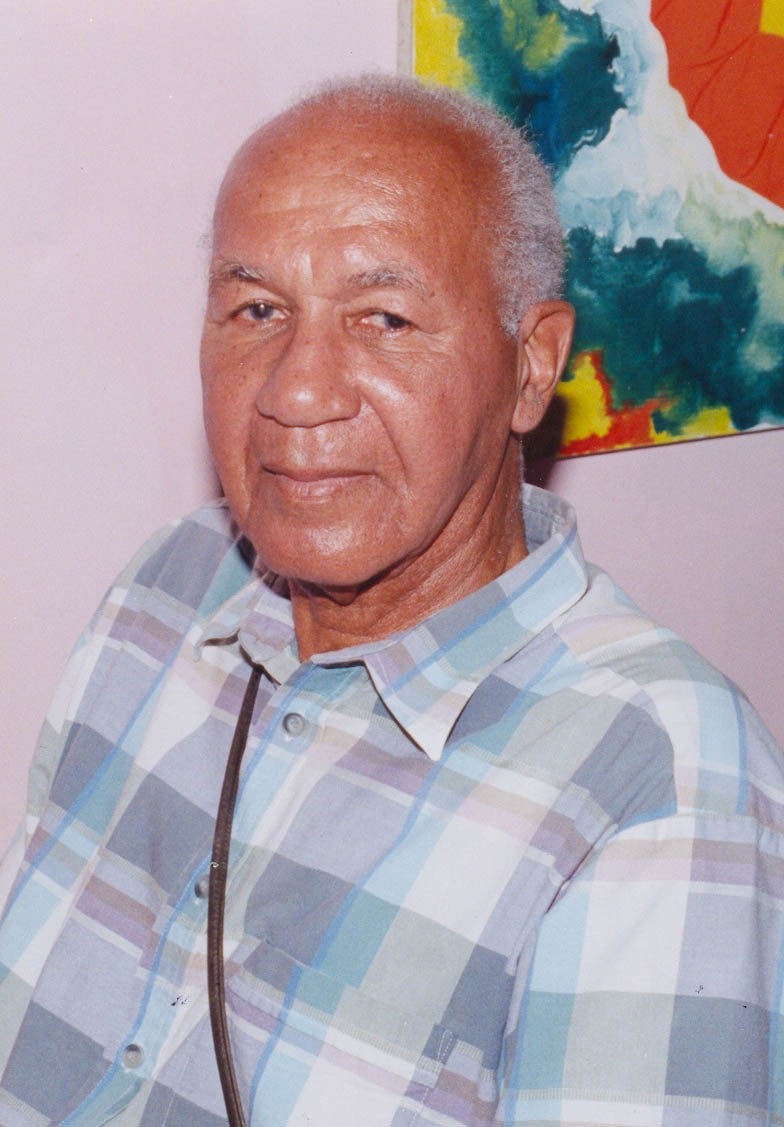Renowned civil engineer Philip Anderson Desmond Allsopp has died following a stroke on Tuesday night.
Allsopp, 94, died on Tuesday at 10:15 pm at the St Joseph Mercy Hospital, his eldest daughter Judith, confirmed to this newspaper. He was the father of four: Judith, Claire, Susan and Roderic, all of whom are currently overseas, and husband to the late O’Donna (1928-2019). They were married for 63 years.
He was honoured for his outstanding service to Guyana in engineering and diplomatic service. In 1977 he was awarded the Golden Arrow of Achievement for dedicated service in the field of engineering and in 1992, the Order of Rio Branco from Brazil, for distinction in diplomatic activity. Also, in honour of his immense contribution in mapping the route to Lethem in Guyana, the road junction linking the interior road to the country’s coast, was named Allsopp Point.
Allsopp was born on April 8th, 1926. He grew up in Charlestown and attended St Stephen’s School for his primary education before winning the Centenary Exhibition and Government Scholarship in 1937. He then attended Queen’s College. Due to his exemplary academic performance, his scholarship was renewed to the completion of his tenure there in 1945. His daughter noted that Allsopp was an “outstanding all round student”, who excelled in both the sciences and the arts. He majored in Pure and Applied Mathematics as well as English Literature and Latin, she stated. Outside of academics, Allsopp also enjoyed athletics and soccer.
His daughter, Claire stated that her father’s interest in engineering started while he was a student at Queen’s College. After leaving school he became an engineering apprentice in Georgetown (1945-49). She states that he would ride to work every day and during this time he observed the need for better roads. He then decided that he wanted to become a road and soils engineer.
“People laughed at him because in British Guiana at the time improving the stone and sandy brick roads was not considered a priority,” Claire said. However, Allsopp was not deterred as he pursued civil engineering at the Imperial College of Science and Technology in London after being awarded a Victory Engineering Scholarship. He commenced learning there in 1949 and completed his studies with a distinction in 1953. He obtained a bachelor’s degree in civil engineering with honours and was awarded the Unwin Prize for the student who had excelled both academically and in other areas of university life. This scholarship allowed him to pursue a master’s degree in civil engineering and he graduated from Imperial College in 1954 with a Master of Science (MSc.) degree with a specialisation in ‘Stabilization of a Tropical Clay for Highway Construction’. Although he was offered a very prestigious position in London after graduation, Allsopp chose to return to his ‘beloved Guiana’.
Allsopp returned to British Guiana in October 1954 and was immediately appointed Construction Engineer. He was the first to introduce scientific methods of road design in Guyana in 1954. Allsopp was responsible for the reconstruction of the East Bank Demerara road – he became the first Guyanese in the country’s history to hold the post of Chief Engineer – and went on to serve thirty-three years in the Civil Service in Works and Hydraulics, where he was responsible for the planning of all roadways and coastal sea defences. The establishment of the first engineering laboratory in the Public Works department and the first roads laboratory in Guyana were also the responsibilities of Allsopp. He oversaw the design of the West Coast Berbice roads and planned a route for a roadway from Georgetown through Guyana’s rainforest to the Bartica-Potaro road. He negotiated the design and oversaw the construction of the Soesdyke/Linden highway and assisted in the negotiations for the survey and location of the Takutu Bridge. Allsopp proposed the idea and assisted in the negotiations of the project to build the Demerara Harbour Bridge. Allsopp retired from the Guyana Civil Service a decade later in 1978 and became a managing partner in an engineering and planning firm. There he took up his major projects which include the expansive drainage and irrigation works on the Mahaica/Mahaicony/Abary Project, the establishment of a ferry between Guyana and Suriname, and the institution of sites for fish ports throughout Guyana. Allsopp was instrumental in the development of the Providence Cricket Stadium in Guyana (Guyana National Stadium).
Given his influence and experience in international affairs, Allsopp served as Guyana’s Deputy High Commissioner in London in 1988, and was appointed as the Ambassador to Brazil in 1990, until 1992. “During his many years of work with the government of Guyana either as a government official, diplomat, and later technical advisor/consultant, he remained nonpartisan when it came to politics and never officially joined ranks with any political party. His interest was to serve his country,” Claire said. While Judith told this newspaper that Allsopp was devoted primarily to Guyana. She shared that her father took her and her siblings on trips so they too could appreciate and explore the country. She said that the family is proud of Allsopp’s many contributions to the country and all the values both he and their mother instilled in each of them.






